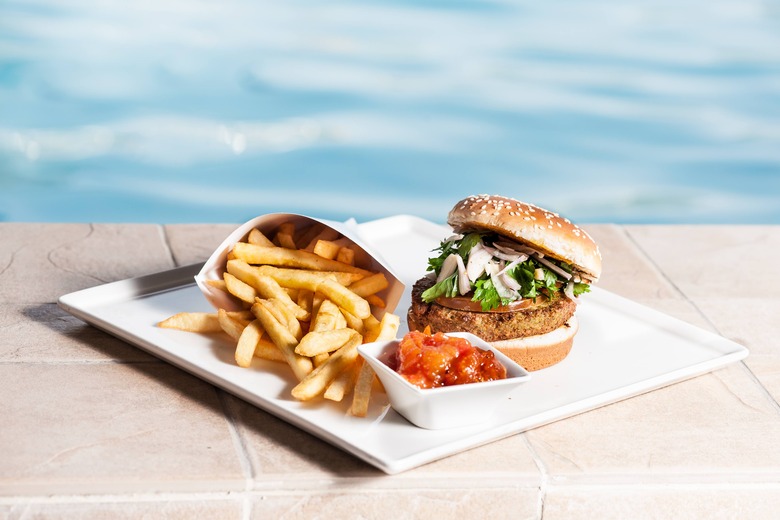Mom Was Wrong: You Can Go Swimming Right After Lunch
We're all familiar with the motto "Wait 30 minutes after you eat before jumping into the pool" — but is this credible advice?
With summer right around the corner, let's settle the matter once-in-for-all.
The logic behind this decades-old mantra is that after eating a hefty meal, blood is sent to the digestive tract to help process the food, which in turn diverts the blood away from the arms and legs. The fear is that a reduced blood flow to the appendages will lead to an inability to swim, or lead to a debilitating muscle cramp. Dr. Mary Messick from Duke Primary Care Timberlyne argues that this theory is unsounded, and that although the digestive tract does require extra blood after a meal, it is not a significant enough quantity to inhibit movement of your arms and legs, a position supported by both the American Academy of Pediatrics and the American Red Cross. You won't drown after downing a burger and fries, but all that food in your stomach may make you feel uncomfortable or give you a slight cramp once you hit the pool.
However, if you plan on being active in the pool you shouldn't necessarily swim on an empty stomach. Eat simple carbohydrates like a banana, cereal bar, or sports drink, and allow at least two hours to digest — if you don't, you may be at risk of a seriously upset stomach. Unlike other cardiovascular exercises, swimming is done horizontally, which raises the risk of gastric influx, so it's also wise to avoid alcohol, excess fiber, and especially fatty or spicy foods, which may further disrupt the stomach.
